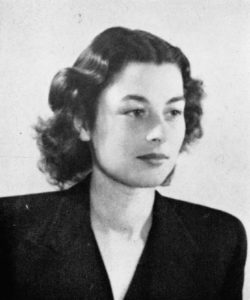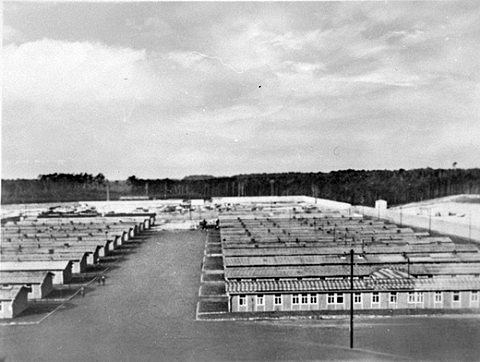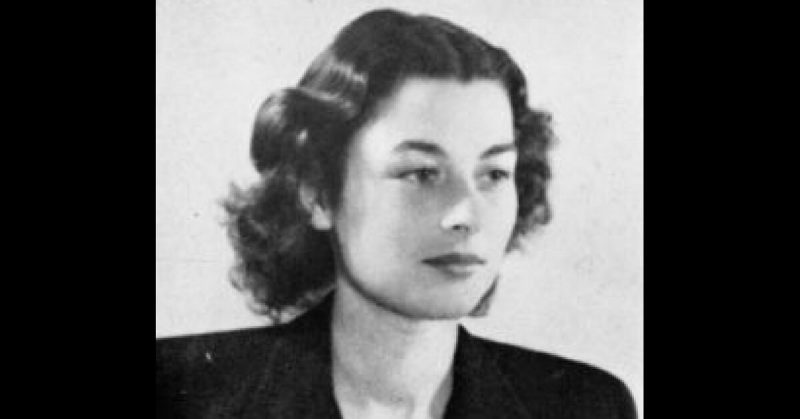A British Special Ops agent in World War II, Violette Szabo was a posthumous recipient of the George Cross for her impressive work in occupied France. During her second mission, she was captured by the Germans, interrogated, tortured and sent to the infamous Ravensbruck concentration camp.
The Start of the Action
Szabo was born in Paris in 1921, then moved to London, age 11, to join the rest of her family. A very active and tomboyish girl, Szabo was known as a good shot and was very popular in her circle. She began work at a department store after school; then World War II broke out.
Initially, Szabo joined the Women’s Land Army, where the work was rather dull. She also worked as a strawberry picker for the war effort, as well as in a factory. She married a French soldier, who went to fight in the Free French attack on Senegal, in South Africa and the Middle East.
Szabo continued to work, becoming a switchboard operator for the London Post Office, where she remained through the Blitz. However, she became bored and enlisted in the Auxiliary Territorial Service. She underwent training, before finding out she was pregnant, forcing her to leave her work.
Putting her child under the watchful eye of trusted carers, she went back to work at an aircraft factory. Then Szabo was informed of her husband’s death in action. It prompted her to volunteer as a field agent for the British Special Ops, spurred on by a desire to fight the enemy that had killed him.

Work in the Special Ops
It was Szabo’s fluency in French and her previous work with the Auxiliary Territorial Service that caught the eye of the Special Ops Executive. She was given a cover as a section leader within the First Aid Nursing Yeomanry, which was often the case for female Special Ops agents.
She underwent extensive training on fieldcraft, navigation, weapons, demolition, escape, evasion, uniform recognition, communications, and cryptography. During her parachute training, she sustained a bad fall and needed to recoup. Back on her feet again, she passed the second time allowing her to enter the action. Prepared for the worst, she made her will before leaving for her first mission.
In April 1944, Szabo parachuted into France with Philippe Liewer. There, she became Corinne Reine Leroy, a commercial secretary who lived in Le Havre, giving her plenty of reason to travel into German restricted zones. There, she and Liewer (under the name Major Charles Staunton) were to assess the damage caused by German arrests.
Unfortunately, their intelligence circuit had been exposed. Szabo did gain information on which local factories in the area were producing German war materials, making it easier for the Allies to pick their bombing targets.
After this first mission was over, she returned to England. During the flight back, her plane was hit by anti-aircraft fire, but it managed to land safely.
Szabo’s second mission sent her and three colleagues parachuting into Limoges, in Western France, immediately after D-Day. Liewer was also on this mission. Szabo went by the name of Madame Villeret, a widow of an antique dealer from Nantes.
It is believed Szabo again injured her ankle during this landing, as she had done while training. While in Limoges, she was to coordinate French resistance activities and sabotage German communications. However, Liewer sent Szabo off to another area of France, where, unbeknownst to him, she would fall prey to the Germans.
Captured By Germans
Szabo, armed and ready to go, was being driven by a young French rebel. As the Germans had forbidden car usage in German-occupied France after D-Day, they aroused suspicion and were stopped.
Immediately upon seeing the Germans Szabo and the young rebel fled. While trying to escape, Szabo fell and again injured her ankle. She made the young rebel go on without her, while she waited under cover of trees, firing on the approaching Germans. She managed to kill at least one corporal, but ran out of ammunition and was then captured.
Szabo was taken for questioning and endured four days of interrogation. She told them her name was Vicky Taylor and she was trying to return to England via Spain. However, she was known to the Gestapo as a Special Ops agent, and so was continuously tortured until being moved to Germany.
Many of Germany’s most valued prisoners were transported to concentration camps as the Allies advanced. Szabo found herself alongside several other Special Ops agents, which did at least help keep her spirits up. Later, they were separated, with Szabo and the other females sent to Ravensbruck. They arrived in August 1944.

During her imprisonment, Szabo was constantly looking for ways to escape. She was put to work digging potatoes, and then in a fabric store. Then she was given harder labor felling trees, clearing icy ground for construction and digging trenches.
During the winter, many women working alongside Szabo froze to death, as they were still wearing the clothes they originally had when first imprisoned in the summer. Through all this, Szabo remained in as high spirits as possible. However, the prisoner abuse continued to escalate, until finally, her morale weakened.
In February 1945, Szabo was executed at the camp with a shot to the back of the head. Her body was cremated. After her death, she became the second woman in history to receive the George Cross.
